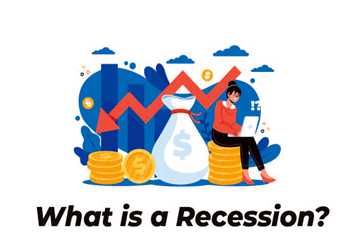What Are The Different Types Of Stocks To Invest In?
Author: abhijeetm
Investing in the stock market might be a terrific way to increase wealth and achieve financial objectives. With so many types of stocks to pick from, it can take time to know where to begin. According to statistics, the total stock market volume between July 2020 and June 2021 was almost $149 trillion. This blog post will examine the many types of stocks available to investors and what differentiates them.
You should have a better idea of the numerous alternatives accessible to you and how to make informed judgments while investing in the stock market by the end of this essay. Understanding the various types of stocks is a crucial step toward constructing a successful investment portfolio, whether you are a novice or an expert investor. So, let's get started!

Top 8 types of stock you must consider investing in
You will find several types of stock in the stock market. But some of the top types of supplies are becoming investors' top choices. The following are the top 8 types of investment:
Common stock
Common stock is the first and most common type of investor invest in. This type of stock is the ideal solution for the beginner investor. With this type of share, you can have a percentage of the company's profit and the right to vote. Holders of common stock can also earn dividends, which are payments provided to stockholders regularly, but those payouts are usually variable and not guaranteed.
The upside potential for common stockholders is theoretically limitless, but there is also a chance that they might lose everything if the company or organization fails with no assets left.
Preferred stocks
Preferred stock is another vital type you must consider to invest. This stock gives more preference than the shareholder of common stock. It provides select shareholders priority over common shareholders in receiving a specified amount of money if the firm is dissolved. Moreover, shareholders of this stock will also get the right to get dividend payments before common stockholders.
Preferred stock, unlike traditional common stock, typically has more in common with fixed-income bond investments. Frequently, a corporation will only sell common stock. Generally, Preferred stock is suitable for investors that value income over long-term gain.
Growth and value stocks
If you are interested in the stock or stock market, you might be familiar with growth and value stocks. But what is the difference between them? Are they the same? No, they are not the same. Growth stocks are the stocks of the company which are massively growing. Investors are often prepared to pay more for these stocks because they expect higher returns. Growth stocks are frequently riskier, but the potential profits are appealing.
In contrast, value stocks are seen to be a more conservative investment. These stocks are effectively for sale, and these are stocks that investors believe are underpriced and undervalued. Value investors look for companies whose stock is inexpensive, unlike competitors or previous stock prices. These stocks are expected to rise in value because they fly under the radar or suffer from a short-term occurrence.
Large-cap, mid-cap, and small-cap stock
Stock market capitalization refers to how much money their shares are worth combined. A company with the largest capitalization is known as a large cap, the smallest capitalization is called small, and the middle capitalization is called a mid-cap. Stocks with market capitalizations of $10 billion or more are classified as large caps. In comparison, stocks with market capitalizations between $2 billion and $10 billion are classified as mid-caps, and stocks with market capitalizations less than $2 billion are classified as small-caps.

IPO stocks
IPO stocks are stocks of those companies that have gone through public to initial public offering. This stock is ideal for those looking to get in on the floor of promising business concepts. When a new firm goes public, investors who want to get in on a solid business idea early are typically ecstatic. However, these stocks are risky, mainly if the financial community is divided on their potential for growth and profit.
Dividend and non-dividend stocks
Dividend and non-dividend stocks are also two different types of stocks. Many companies pay a dividend to their shareholders. And this dividend becomes the regular income of their shareholders. A corporation that pays even $0.01 per share qualifies as a dividend stock.
In contrast, a company that did not pay dividends to its shareholders qualifies as non-dividend stock. It does not mean non-dividend shares are less popular because they can be substantial investments as the share price increases. Some of the world's largest corporations do not pay dividends, while the trend in recent years has been towards more equities paying dividends to owners.
Blue-chip stocks
Blue chip stocks are another excellent type of stock to invest in. They are the ideal investment option for those who want lesser risk because of their consistency.
Blue Chip stocks are the cream of the crop in the business world, containing companies that are leaders in their respective industries and have established solid reputations. It is important to remember that they provide less return than other stocks. Conservative investors may prefer to top-weight their portfolio with blue-chip stocks, especially during times of uncertainty.
Penny stocks
Lastly, penny stocks are minor quality stocks you must consider investing in. Penny stocks are vulnerable to scams that can wipe out your life's savings due to their risky, speculative business practices. But they are the best because of their price and high gain.
Conclusion
Investing in stocks is a terrific way to enhance your money, but you should understand the different sorts of stocks before you start. You can lower your risk and raise your chances of earning a healthy return on your investment by investing in a diversified variety of companies. Blue-chip stocks, growth stocks, income stocks, value stocks, and penny stocks are various types of stocks and bonds you can invest in. Each of these companies has its distinct characteristics and risk profile. Therefore, it is essential to learn about and comprehend them before making any investment decision.







